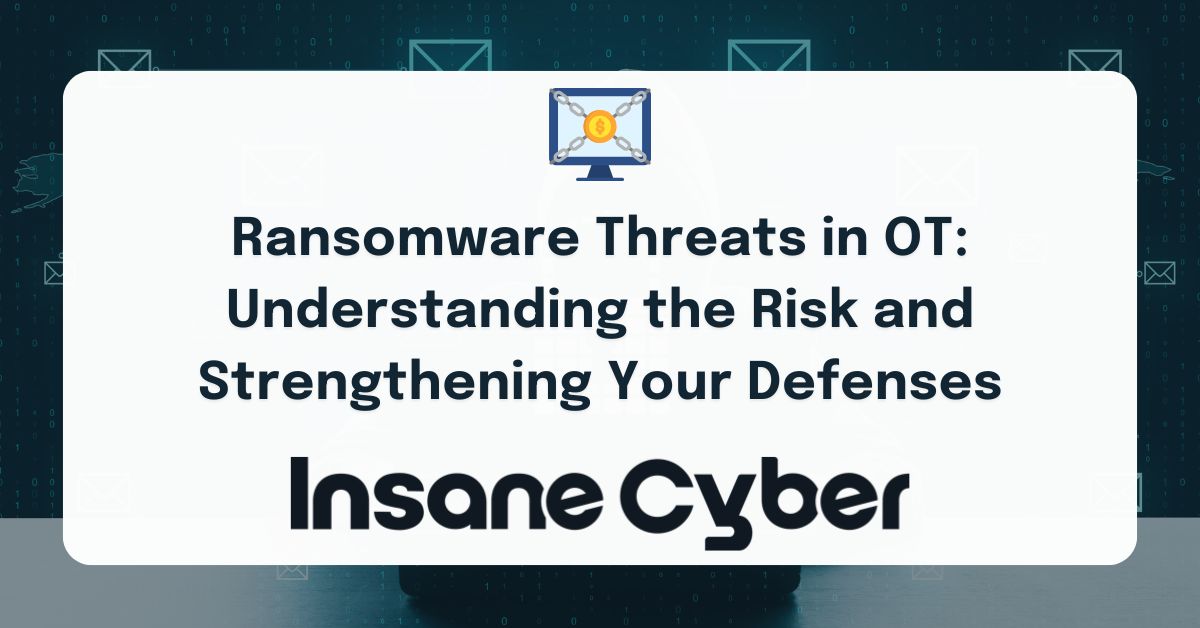Ransomware is often discussed in relation to IT systems—attacks on hospitals, banks, or large corporations tend to dominate headlines.
However, a growing number of cybercriminals are targeting a lesser-known but equally vital area: Operational Technology (OT).
These systems power critical sectors such as energy, manufacturing, and water utilities. When compromised, the consequences can go far beyond financial loss, affecting public safety and national infrastructure.
This article breaks down why OT systems are at risk, how ransomware infiltrates them, and what organizations can do to safeguard their operations.
Why OT Systems Are an Emerging Target
Unlike traditional IT networks, OT systems are designed to control physical processes—power grids, factory equipment, water treatment systems, and more.
While these environments were once isolated, increased connectivity and integration with IT networks have expanded their exposure to cyber threats.
What makes OT vulnerable?
- Aging Infrastructure: Many OT systems were built decades ago with stability, not security, in mind. As a result, they often lack modern safeguards.
- Downtime Risks: Updating OT software can interrupt critical operations. Because of this, patches and updates are often delayed or skipped altogether.
- Limited Network Monitoring: Traditional OT environments may not include real-time threat detection, leaving breaches unnoticed until significant damage has been done.
- IT/OT Convergence: As more OT systems are connected to corporate IT networks, attackers can use common IT exploits to gain access to OT environments.
- Operational Priorities: In OT, maintaining uptime is the top priority. Cybercriminals exploit this urgency, betting that companies will pay ransoms to resume operations quickly.
How Ransomware Reaches OT Environments
Cybercriminals use a range of tactics to breach OT networks. These are some of the most frequently observed methods:
- Phishing Attacks: Employees may unknowingly open infected email attachments or click malicious links, giving attackers a foothold in the system.
- Exploiting Remote Access: The use of remote monitoring tools has grown, but weak credentials or unpatched software create easy entry points.
- Vendor and Third-Party Compromise: Breaching a less secure partner or contractor can allow lateral movement into the OT environment.
- Outdated Systems: OT networks with unpatched vulnerabilities provide attackers with ready-made opportunities to deploy malware.
- Removable Media: Devices like USBs are still commonly used in OT environments and can introduce ransomware if not carefully managed.
Preventing and Responding to Ransomware in OT
Mitigating ransomware risks in OT environments requires a tailored approach. The following strategies can help organizations prepare and respond effectively:
- Segment Critical Systems – Keep essential OT systems separate from general IT networks to contain potential intrusions.
- Prioritize Patch Management – Develop a structured process for testing and applying security updates, focusing on the most critical vulnerabilities first.
- Enhance Monitoring – Use security tools specifically designed for OT environments to detect unusual activity early.
- Educate Your Workforce – Regular training ensures employees recognize phishing attempts and understand their role in maintaining cybersecurity.
- Establish a Response Plan – A clearly defined incident response process helps reduce downtime and supports faster recovery in the event of an attack.
- Maintain Offline Backups – Secure backups—stored separately from the network—are essential for restoring operations without paying a ransom.
- Strengthen Authentication – Multi-factor authentication and strict access controls help prevent unauthorized access to sensitive systems.
Case Study: The Colonial Pipeline Breach
The 2021 Colonial Pipeline incident remains one of the most impactful ransomware attacks in recent memory. A compromised password gave attackers access to internal systems, leading to widespread fuel shortages and significant public concern. The event forced the company to halt operations and pay a multi-million-dollar ransom.
This breach highlights the importance of basic cybersecurity hygiene—like strong authentication—and demonstrates how a single weak point can trigger a national crisis.
Key Takeaways
Ransomware attacks on OT systems are not just a hypothetical risk—they’re already happening, with serious real-world consequences. Organizations responsible for critical infrastructure must recognize the evolving threat landscape and take immediate steps to secure their systems.
Investing in proactive security measures, staff education, and resilient architecture can dramatically reduce the chances of a successful ransomware attack. The cost of prevention is far less than the price of recovery.





